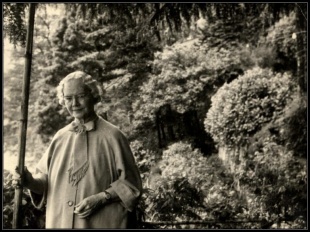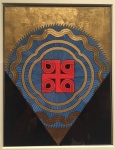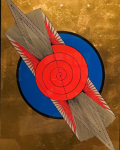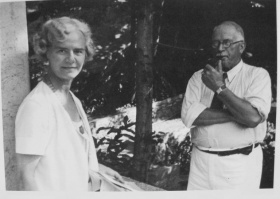Olga Fröbe-Kapteyn
UNDER CONSTRUCTION
UNDER CONSTRUCTION
Olga Fröbe-Kapteyn (19 October 1881 – 1962) was a Dutch artist and theosophist. She is best known as the founder of the Eranos Foundation that holds annual meetings of scholars.
Art
Here are some examples of her art:
Eranos Foundation and ARAS
The Eranos Society, later known as the Eranos Foundation, began meeting each year in late August at the estate of Olga Fröbe-Kapteyn at Lake Maggiore in southern Switzerland, beginning in 1933. She invited eminent participants such as:
- Heinrich Zimmer (Indian religious art)
- Károly Kerényi (Greek mythology)
- Mircea Eliade (history of religions)
- C.G. Jung (analytical psychology),
- Erich Neumann (analytical psychology)
- Gilles Quispel (gnostic studies)
- Gershom Scholem (Jewish mysticism)
- Henry Corbin (Islamic religion)
- Adolf Portmann (biology)
- Herbert Read (art history)
- Max Knoll (physics)
- Joseph Campbell (comparative mythology)
Olga Froebe-Kapteyn had a lively interest in finding and collecting images to illustrate the topic of each year's meeting, which included such titles as "Yoga and Meditation East and West," "The Gestalt and Cult of the Great Mother," "The Hermetic Principle in Mythology, Gnosis, and Alchemy," "The Mysteries," "Spirit and Nature," "Man and Time," and many others. She explained this interest in images in her preface to the volume Spirit and Nature (1954): "Those who feel the truth of the old Chinese conception that all that happens in the visible world is the expression of ideas or images in the invisible might do well to consider Eranos from that point of view"[1] She might have said of the collection of pictorial artifacts what she says of the lectures themselves: "Their value is evocative. In many cases, they carry us to the bounds of scholarly investigation and discovery, and point beyond. They touch upon unusual themes, facts, and analogies and in so doing evoke the great archetypal images"[2]
The Archive for Research in Archetypal Symbolism (ARAS) is available at ARAS.org.
The Archive for Research in Archetypal Symbolism (ARAS) is a pictorial and written archive of mythological, ritualistic, and symbolic images from all over the world and from all epochs of human history. The collection probes the universality of archetypal themes and provides a testament to the deep and abiding connections that unite the disparate factions of the human family.
The ARAS archive contains about 18,000 photographic images, each cross-indexed, individually mounted, and accompanied by scholarly commentary. The commentary includes a description of the image with a cultural history that serves to place it in its unique historical and geographical setting. Often it also includes an archetypal commentary that brings the image into focus for its modern psychological and symbolic meaning, as well as a bibliography for related reading and a glossary of technical terms.[3]
Dr. Joseph L. Henderson, co-author with Dr. Carl Gustav Jung of Man and His Symbols, wrote about the history of ARAS:
A number of original illustrations of ancient symbolic artifacts were collected by Olga Froebe-Kapteyn at her estate on Lake Maggiore in southern Switzerland, where each year in late August, beginning in 1933, she conducted meetings of the Eranos Society. In his foreword to Spirit and Nature, volume 1 (1954) of the series Papers from the Eranos Yearbooks, Joseph Campbell notes that each meeting was assigned a theme, which served as the topic for papers presented by scientists, theologians, philosophers, psychologists, and religious historians. "Continuity was due, on the one hand, to the guidance of Frau Froebe, whose sense of the meaning and object of Eranos never wavered [even during the years of World War II when the operation was greatly curtailed—JLH], and on the other, to the continuous presence and genial spirit of Dr. C.G. Jung, whose concept of the fundamental psychological laws of human life and thought supplied a criterion for both the recognition and the fostering of the perennial in a period of transition"[4]
Notes
- ↑ History of ARAS by Joseph L. Henderson, quoting Man and His Symbols, page xv.
- ↑ History of ARAS by Joseph L. Henderson, quoting Man and His Symbols, page xvi.
- ↑ About ARAS.
- ↑ History of ARAS by Joseph L. Henderson, quoting Man and His Symbols, page xii.




